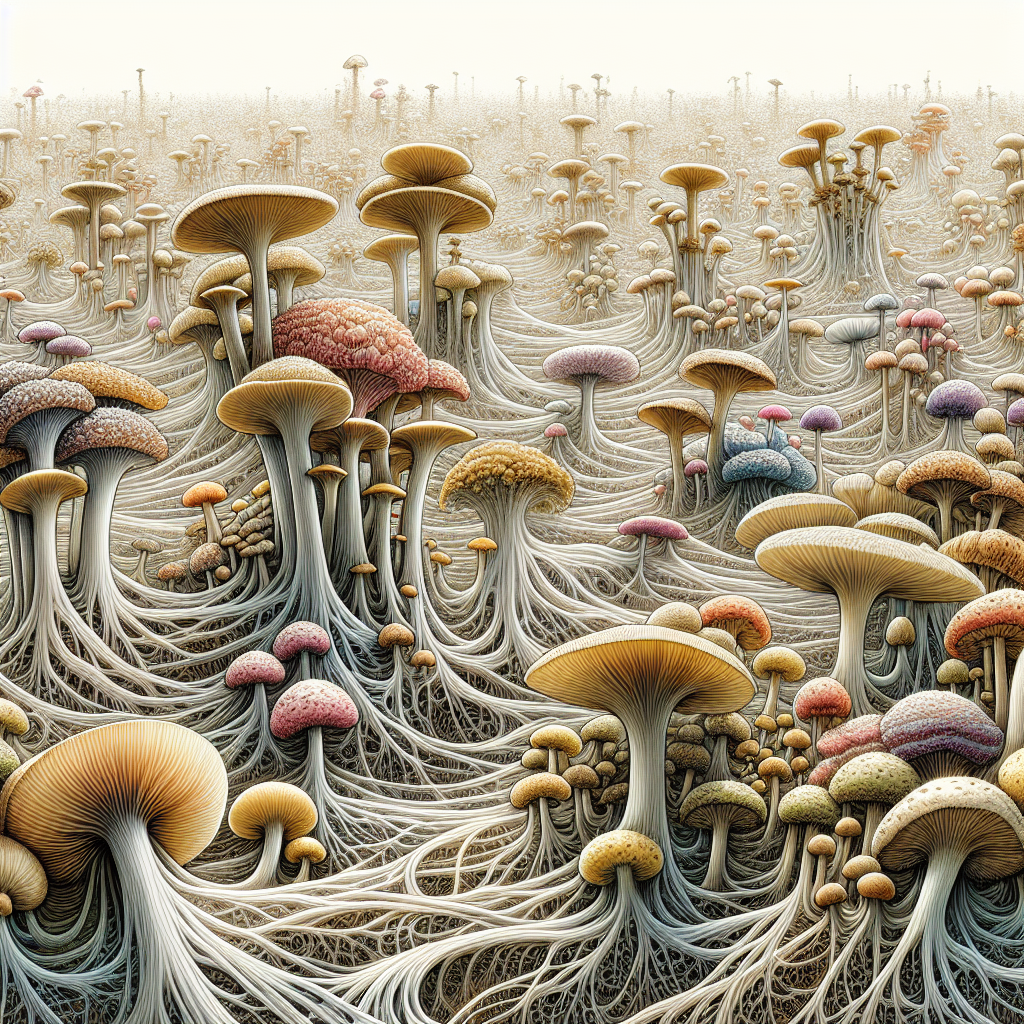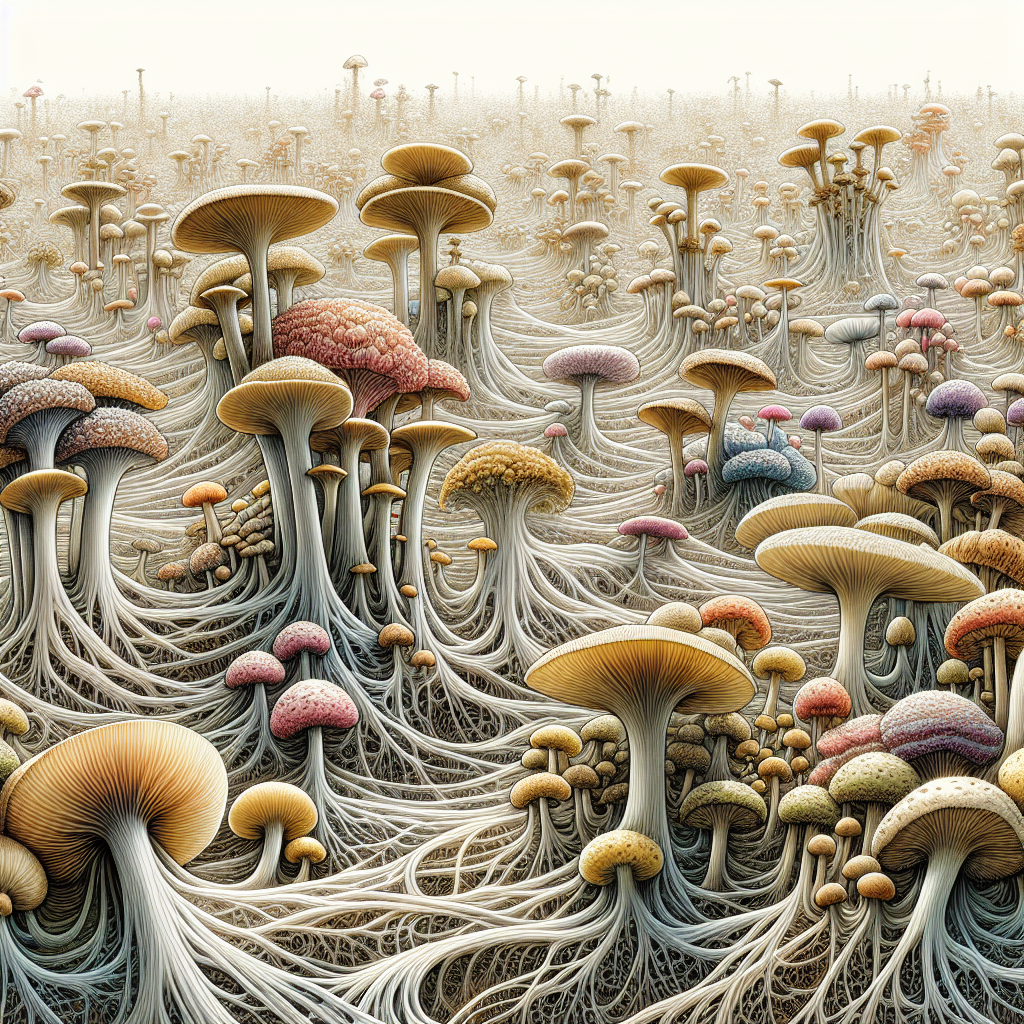As an advocate for the environment or an enthusiast of nature’s mysteries, you’ll find “The Amazing World of Mycelium and mushrooms” to be a fascinating revelation. This article unveils the riveting journey into the realm of these often underappreciated, yet wonderful organisms, highlighting their intricate life processes, ecological significance and beneficial applications to humanity. Get ready to expand your awareness and enhance your understanding of these earthbound wonders as we take a closer view of this incredible world of Mycelium and Mushrooms.
Understanding Mycelium
Mycelium is the delicate, thread-like component of fungi that forms the underlying network within the soil substrate or the tissue of a host. While often unseen because of its location below the soil surface, it plays a critical role in the functioning of ecosystems and the wellbeing of many plant species.
Definition of Mycelium
Mycelium refers to a mass of branched, tubular filaments (hyphae) of fungi. These threads may be incredibly minute, but when they bind together, they form a vast and intricate web known as a mycelial network. Despite their initial appearance, they’re indispensable parts of countless ecosystems worldwide.
The Composition and Structure of Mycelium
Each mycelial filament is composed of tubular cells known as hyphae, which are filled with cytoplasm and various organelles. The wall of a hypha is made of chitin, which gives it strength and flexibility. Mycelium is structured in a way that maximises its surface area to absorb nutrients effectively from the environment.
The Role of Mycelium in Ecosystems
Mycelium serves several functions within ecosystems. It helps break down organic material, thereby facilitating nutrient cycling and soil health. It connects individual plants, transferring nutrients and supporting communication between plants. Notably, certain mycelium forms symbiotic relationships with plant roots, improving the plant’s nutrient absorption.
The Fascinating Life Cycle of Mycelium
The life cycle of mycelium involves a complex process of growth, reproduction, and nutrient cycling, providing fascinating insights into the workings of the fungal kingdom.
Growth Process of Mycelium
Mycelium grows by extending its hyphae into the surrounding environment, absorbing nutrients and expanding its network. Given the right conditions of moisture, temperature, and nutrients, mycelium can rapidly cover a vast area.
Reproduction Methods
Mycelium reproduces by releasing spores, which are formed at the tips of specialised hyphae. These spores are dispersed by various means, such as wind, water, or animal activity. Upon landing in a suitable location, the spores germinate and develop into new mycelial networks.
Mycelium and Nutrient Cycling
Mycelium plays a crucial role in nutrient cycling in ecosystems. By decomposing organic material, mycelium releases nutrients back into the soil, making them available to plants and other organisms. This process is vital for the health and sustainability of ecosystems.
Mycelium and Mushrooms: The Connection
Mycelium and mushrooms are both parts of a fungus. While mycelium forms the main body of a fungus and facilitates nutrient absorption, mushrooms are the reproductive structures.
How Mycelium Produces Mushrooms
When the conditions are right, mycelium forms a tightly-packed mass of hyphae called a primordium. This primordium grows and differentiates into a mushroom, which serves as the reproductive structure of the fungus. The mushroom cap contains gills or pores, in which millions of spores are produced.
The Role of Mushrooms in the Lifecycle of Mycelium
Mushrooms play a crucial role in the life cycle of mycelium by producing and dispersing spores, which can grow into new mycelial networks. The dispersal of spores increases the fungi’s range and improves its chances of encountering suitable substrates.

Different Types of Mushrooms
There are numerous types of mushrooms, each with unique properties and uses. Ranging from edible and medicinal to psychoactive and poisonous, mushrooms hold a great deal of fascination and have copious uses.
Edible Mushrooms
Edible mushrooms are remarkably varied and contribute a unique blend of flavors to many cuisines worldwide. Examples include the savory Portobello and Crimini, delicate Chanterelles, and the uniquely flavored Shiitake and Maitake.
Medicinal Mushrooms
Certain mushrooms have been used in traditional medicine for centuries and offer various health benefits. For instance, Reishi mushrooms may support immunity, while the compounds in Lion’s Mane mushrooms may promote brain health.
Psychoactive Mushrooms
Psychoactive mushrooms, also known as psychedelic or magic mushrooms, contain a powerful compound called psilocybin. These mushrooms have a long history of use in religious and spiritual practices and are currently being researched for their potential therapeutic applications.
Poisonous Mushrooms
Caution is necessary when foraging or consuming wild mushrooms, as some can be highly poisonous. Amanita phalloides, also known as the death cap, is one highly toxic species. Consuming a single specimen can be lethal.
Unique Characteristics of Mushrooms
Mushrooms exhibit a variety of unique characteristics, including a fascinating anatomy, specialized reproductive mechanisms, and even bioluminescence.
Mushroom Anatomy
A mushroom’s anatomy is quite distinct. The cap or pileus houses the spores, while the gills, teeth, or pores underneath provide a surface area for spore production. The stalk or stipe elevates the cap, facilitating spore dispersal.
The Spore Production and Dispersion Mechanism
Mushrooms produce spores in their gills, teeth, or pores, which are then released into the environment. Spore dispersal may occur through wind, water, or animal interactions. Once the spores find a suitable substrate, they can germinate and form a new fungus.
Bioluminescent Mushrooms
Certain mushrooms have the fascinating feature of bioluminescence or the ability to emit light. An example is the Ghost Fungus (Omphalotus nidiformis), which emits a soft green glow. This feature is believed to attract insects that aid in spore dispersal.
The Role of Mushrooms in the Ecosystem
Mushrooms serve wide-ranging roles in ecosystems, participating in decomposition and nutrient cycling, providing food for wildlife, and forming symbiotic relationships.
Decomposition and Nutrient Cycling
By decomposing organic matter, mushrooms contribute substantially to nutrient cycling. They release vital nutrients back into the soil, promoting soil fertility and assisting plant growth.
Mushrooms as a Food Source for Wildlife
Many species of wildlife depend on mushrooms as a nutritional food source. Insects, small mammals, birds, and even larger mammals consume different parts of the mushroom.
Mushrooms and Their Symbiotic Relationships
Mushrooms can form symbiotic relationships with plants and other organisms. Mycorrhizal mushrooms connect with the roots of plants, helping them absorb nutrients while receiving carbohydrates in return.
Human Uses of Mycelium
Mycelium has various applications in human societies, including agriculture, industry, and environmental remediation.
Mycelium in Agriculture and Horticulture
Mycelium-based products have been increasingly used in agriculture and horticulture to enhance plant growth and control pests. They also contribute to soil health by improving its structure, nutrient content, and microbial diversity.
Mycelium in Industry and Manufacturing
Mycelium-based materials are finding ground in industries for their biodegradable and sustainable properties. When grown in molds, mycelium can form composite materials used in packaging, building materials, and even sustainable leather alternatives.
Mycelium in Environmental Remediation
Mycelium has promising potential in environmental remediation or mycoremediation. It can break down a wide variety of pollutants, including heavy metals, oil, and pesticides, thereby improving soil and water health.
Human Uses of Mushrooms
Mushrooms have widespread uses in human cultures, ranging from culinary uses to medicine and artistic expression.
Mushrooms in Gastronomy
Mushrooms are a culinary delight in many cultures, prized not only for their distinct flavors but also their nutritional profile. They are a good source of proteins, vitamins, and antioxidants.
Mushrooms in Traditional Medicine
Certain mushrooms are key to many traditional medicine systems for their supposed health-promoting properties. They are believed to boost immunity, support mental health, and manage various diseases.
Mushrooms in Art and Culture
Mushrooms have found a place in art and culture, with their unique shapes and symbolic meanings inspiring countless artworks. They are also intertwined with folklore and mythology in many societies.
Mycelium and Mushrooms: Current Research and Innovations
Research in the field of mycology, the study of fungi, has open doors to numerous innovations related to both mycelium and mushrooms.
Scientific Studies on Mycelium
Scientists are investigating the various roles and potential of mycelium. Current studies involve examining its structure and behavior under varied environmental conditions, potential applications in remediation efforts, and its symbiotic role within ecosystems.
Technological Innovations Using Mycelium
There has been a surge in innovations using mycelium in technology sectors. Mycelium-based materials have shown viable potential as sustainable alternatives to plastic, leather, and certain construction materials.
Scientific Studies on Mushrooms
Scientific research on mushrooms mainly involves studying their nutritional, medicinal, or toxic properties. Ongoing research also explores their genetic makeup and the unique compounds they produce.
Technological Innovations Using Mushrooms
Mushrooms have inspired various technological innovations, particularly in the biomedical field. For instance, the structure of mushroom spores is being used to develop new types of adhesives and coatings.
The Future of Mycelium and Mushrooms
The future looks promising for mycelium and mushrooms, with potential for revolutionary breakthroughs in multiple sectors.
Predicted Mycelium Applications and Developments
From sustainable packaging to agriculture, mycelium applications are predicted to expand exponentially. One exciting area of development is mycelium’s role in creating a more sustainable fashion industry.
Predicted Advancements in Mushroom Cultivation
Anticipated advancements in mushroom cultivation spell increasing yields, wider range of cultivable species, and more efficient utilization of resources. Technology is expected to play a significant role in future mushroom farming.
The Importance of Mycelium and Mushrooms for Sustainability
Given their unique characteristics and potential applications, mycelium and mushrooms hold the key to addressing several sustainability challenges. They provide environmentally friendly alternatives for materials, contribute to soil health, and may play an ever-greater role in waste management in the future. In all, they offer a promising path towards a more sustainable and resilient world.
